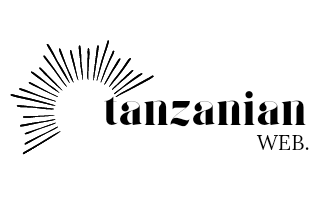“200”, Aptitude Test
Questions and Answers for the Tutorial and Assistant Lecturer (Law)– UDSM,
UDOM, TPSC, and MUST.
ABSTRACT
This is a collection of 200 multiple
choice questions designed to help candidates prepare for the Tutorial and
Assistant Lecturer (Law) online aptitude test in Tanzania. The questions cover
core legal subjects, legal writing, ethics, research, and academic duties. The
final part focuses on lecturing skills, student engagement, classroom
management, and assessment techniques. The set reflects the actual test style,
with closely related options to sharpen critical thinking and support aspiring
legal academicians.
Prepared by:
Johnson Yesaya Mgelwa.
A lawyer stationed in Dar-es-salaam.
0628729934.
Date: June 2, 2025
Dear applicants,
This collection of questions and answers
has been carefully prepared to help all of you to understand the key areas
tested during the Tutorial and Assistant Lecturer (Law) interview. The goal is
to provide a useful, and practical study guide so you can all perform
confidently and fairly in the selection process. I wish you the best of luck,
and may this resource support you in achieving success!
Warm regards,
Johnson Yesaya Mgelwa
For Personal Use by Applicants Preparing
for Tutorial and Assistant Lecturer (Law) interview
ALL
QUESTIONS TOGETHER.
150.
A tutorial assistant’s role includes:
A. Auditing university finances B. Leading national legal reforms C. Supporting
learning and preparing for postgrad studies D. Organizing student elections
C. Supporting learning and preparing for postgrad studies
151.
The most effective way to start a lecture is by:
A. Handing out exams B. Greeting students and outlining objectives C. Reading a
newspaper D. Giving random questions
B. Greeting students and outlining objectives
152.
Active learning encourages students to:
A. Copy notes only B. Listen passively C. Participate and apply knowledge D.
Sleep during lectures
C. Participate and apply knowledge
153.
A syllabus is important in teaching because it:
A. Tells jokes B. Is required by law C. Guides both lecturer and students on
course structure D. Avoids legal disputes
C. Guides both lecturer and students on course structure
154.
A good tutorial assistant should:
A. Arrive late to class B. Ignore students' questions C. Prepare thoroughly and
engage with students D. Focus on administrative tasks only
C. Prepare thoroughly and engage with students
155.
Giving regular feedback to students helps to:
A. Confuse them B. Demotivate them C. Monitor progress and improve learning D.
Delay exams
C. Monitor progress and improve learning
156.
One important characteristic of effective communication in class is:
A. Loud voice only B. Clarity and conciseness C. Speed talking D. Use of
complex jargon
B. Clarity and conciseness
157.
The use of Bloom’s Taxonomy in education helps to:
A. Limit teaching methods B. Promote only memory-based exams C. Develop
higher-order thinking skills D. Avoid teaching critical issues
C. Develop higher-order thinking skills
158.
The best way to handle a disruptive student is to:
A. Ignore it completely B. Shout at them C. Address the behavior calmly and
privately D. Call security immediately
C. Address the behavior calmly and privately
159. Visual aids in teaching:
A. Distract students B. Are for entertainment C. Enhance understanding and
retention D. Replace the lecturer
C. Enhance understanding and retention
160.
One common method to evaluate student performance is:
A. Guessing games B. Giving surprise quizzes C. Peer marking only D. None of
the above
B. Giving surprise quizzes
161.
A formative assessment is aimed at:
A. Giving final grades B. Punishing poor students C. Monitoring student
learning progress D. Replacing teaching
C. Monitoring student learning progress
162.
Summative assessment is mostly done:
A. During tea breaks B. At the end of a course or unit C. At the beginning of
the semester D. Weekly
B. At the end of a course or unit
163.
Encouraging student-centered learning involves:
A. Dictating content B. Passive listening C. Active student participation and
responsibility D. Memorization
C. Active student participation and responsibility
164.
Plagiarism in academic work refers to:
A. Original ideas B. Forgetting a textbook C. Using another’s work without
proper citation D. Submitting early
C. Using another’s work without proper citation
165.
A lesson plan helps the teacher to:
A. Control time only B. Organize and structure the teaching session C.
Entertain students D. Replace lectures
B. Organize and structure the teaching session
166.
During class discussions, the role of a tutorial assistant is to:
A. Dictate answers B. Stay silent C. Facilitate and guide the conversation D.
Grade participation
C. Facilitate and guide the conversation
167.
When a student asks a question that you do not know, the best response is:
A. Ignore the student B. Guess the answer C. Admit it and promise to find the
correct answer D. Ask the class to vote
C. Admit it and promise to find the correct answer
168.
A good PowerPoint presentation should:
A. Be full of paragraphs B. Use visuals and bullet points effectively C. Use
red font on red background D. Be read word-for-word
B. Use visuals and bullet points effectively
169.
Reflective teaching means:
A. Staring in the mirror B. Repeating lectures C. Analyzing one’s teaching for
improvement D. Copying other lecturers
C. Analyzing one’s teaching for improvement
170.
In an academic setting, office hours are used for:
A. Taking tea B. Student consultations and academic support C. Marking only D.
Attending seminars
B. Student consultations and academic support
171.
A tutorial assistant can motivate students by:
A. Criticizing them in public B. Rewarding effort and providing encouragement C.
Giving long assignments only D. Avoiding interaction
B. Rewarding effort and providing encouragement
172.
The term pedagogy refers to:
A. The legal status of lecturers B. Methods and practice of teaching C. Student
rebellion D. Punishment
B. Methods and practice of teaching
173.
Encouraging students to use moot courts in legal education helps
develop:
A. Typing speed B. Oral advocacy and legal reasoning C. Class attendance D.
Uniform dressing
B. Oral advocacy and legal reasoning
174.
One key benefit of group work is:
A. Reduces teaching load B. Promotes teamwork and critical thinking C. Leads to
noise D. Weakens performance
B. Promotes teamwork and critical thinking
175.
Providing students with a rubric for assignments helps to:
A. Confuse them B. Limit creativity C. Clarify expectations and grading D.
Avoid assessment
C. Clarify expectations and grading
176.
Students engage more when:
A. They feel ignored B. There is no structure C. The class is interactive and
relevant D. They are always silent
C. The class is interactive and relevant
177.
One effective way to use case law in teaching is to:
A. Memorize it only B. Avoid student opinions C. Use real-life cases for
analysis and discussion D. Skip them
C. Use real-life cases for analysis and discussion
178.
A tutorial session differs from a lecture because:
A. It involves direct instruction only B. It’s always shorter C. It allows for
discussion and clarification D. It is for punishment
C. It allows for discussion and clarification
179.
Managing large classes requires:
A. Avoiding eye contact B. Yelling for attention C. Planning and classroom
control strategies D. Sitting silently
C. Planning and classroom control strategies
180.
The constructive alignment principle ensures:
A. Curriculum matches learning outcomes, teaching, and assessment B. Marks are
shared randomly C. Classrooms are painted D. Lecturers work in isolation
A. Curriculum matches learning outcomes, teaching, and assessment
181.
One way to promote academic honesty is to:
A. Encourage group copying B. Use plagiarism detection software C. Share
previous answers D. Tell students to memorize
B. Use plagiarism detection software
182.
Creating a safe learning environment involves:
A. Ignoring student questions B. Encouraging respect and inclusiveness C.
Banning feedback D. Yelling often
B. Encouraging respect and inclusiveness
183.
Tutorials should be designed to:
A. Replace lectures B. Reinforce and expand lecture content C. Entertain
students D. Grade students harshly
B. Reinforce and expand lecture content
184.
Giving examples from Tanzanian legal context during class:
A. Distracts students B. Makes lessons more relatable and practical C. Should
be avoided D. Is only for senior staff
B. Makes lessons more relatable and practical
185.
The aim of continuous assessment is to:
A. Replace exams B. Monitor learning and provide regular feedback C. Make
teaching difficult D. Grade faster
B. Monitor learning and provide regular feedback
186.
A good academic presentation should include:
A. Definitions only B. Too many slides C. Clear structure, examples, and
summary D. Endless content
C. Clear structure, examples, and summary
187.
Collaborative learning promotes:
A. Memorization B. Isolation C. Shared understanding and teamwork D. Dictation
C. Shared understanding and teamwork
188.
A tutorial assistant should write lesson notes:
A. After teaching B. Without checking syllabus C. Before class with reference
to the syllabus D. During lectures
C. Before class with reference to the syllabus
189.
Use of learning management systems (LMS) like Moodle helps:
A. Students play games B. Share memes C. Distribute materials and track
progress D. Avoid class
C. Distribute materials and track progress
190.
Asking probing questions in class helps to:
A. Confuse students B. Enhance critical thinking C. Waste time D. Discourage
participation
B. Enhance critical thinking
191.
Interactive lectures mean:
A. Watching movies B. Repeating laws C. Involving students in discussion and
learning activities D. Focusing only on theory
C. Involving students in discussion and learning activities
192.
Forming study groups among students helps them:
A. Play football B. Gossip C. Learn collaboratively and share ideas D. Avoid
teachers
C. Learn collaboratively and share ideas
193.
When students give wrong answers, the best approach is to:
A. Laugh at them B. Ignore them C. Correct gently and guide their thinking D.
Punish them
C. Correct gently and guide their thinking
194.
One objective of higher legal education is to:
A. Create political activists B. Promote practical and theoretical
understanding of law C. Produce artists D. Train judges only
B. Promote practical and theoretical understanding of law
195.
The best way to end a class is by:
A. Leaving quickly B. Giving a summary and assignments C. Ignoring questions D.
Playing music
B. Giving a summary and assignments
196.
One role of a tutorial assistant during practicals is to:
A. Supervise and assist students B. Watch TV C. Grade all exams D. Write court
decisions
A. Supervise and assist students
197.
Academic staff should be guided by principles of:
A. Political affiliation B. Personal gain C. Integrity, accuracy, and fairness D.
Internet popularity
C. Integrity, accuracy, and fairness
198.
Encouraging legal writing exercises enhances:
A. Physical strength B. Legal drafting and reasoning skills C. Confusion D.
Time wasting
B. Legal drafting and reasoning skills
199.
The role of academic research in universities includes:
A. Writing fiction B. Promoting knowledge, solving problems, and guiding policy C.
Marketing products D. Memorizing judgments
B. Promoting knowledge, solving problems, and guiding policy
200.
A key academic duty of a Tutorial Assistant is to:
A. Issue land titles B. Work in banks C. Assist in teaching, research, and
undergo postgraduate training D. Supervise PhD students
📘 Get the Full Aptitude Test PDF (Questions 1–150)
You’ve just accessed the last 50 questions. The full set of 200 expertly prepared aptitude test questions for the Tutorial and Assistant Lecturer (Law) position is available for download in a PDF format
To receive the full PDF (Questions 1–150), please make a payment of Tsh 10,000 to the LIPA number below:
After payment, please send a text message with the words “Tutorial and Assistant Lecturer (Law)” to:
⚠️ Important Notice
- The PDF is watermarked and protected for personal use only.
- Redistribution, sharing, screenshotting, or copying the contents is strictly prohibited.
- Legal action may be taken against the misuse of this material.
Thank you for supporting quality content. Best of luck in your interview preparation!


%20(10).png)





0 Comments
PLACE YOUR COMMENT HERE
WARNING: DO NOT USE ABUSIVE LANGUAGE BECAUSE IT IS AGAINST THE LAW.
THE COMMENTS OF OUR READERS IS NOT OUR RESPONSIBILITY.